1. 4. The Implementation phase (prepare and do) is where the instruction is presented to the learners. keep in mind for the instruction to be successful preparation may still be needed to be accomplished.
1.1. PREPARE THE INSTRUCTOR
1.1.1. Train the trainer. If instructor was not part of the team that developed instruction you should insure that the instructor is familiar with the objectives, activities, media, and course content. In addition, the Instructor / facilitator should be prepared to use any rubric or assessment tools.
1.2. PREPARE THE LEARNER
1.2.1. Learner should be notified about the course and the course schedule. Learners should be made aware of any prerequisites. Learners should have the tools and knowledge to complete the course. At this step, an overview of the learning experience should be given to the student to facilitate retention and completion. Intrinsic and extrinsic motivation should be addressed in this phase. Why should the learner complete this course? Will they earn a certificate? Or will the course just make them a better person? What is their motivation?
1.3. PREPARE THE ENVIRONMENT
1.3.1. Orientation to any unfamiliar L.M.S. should be included in beginning instruction. Up load course to a L.M.S. and review for bugs. If classroom instruction is the instructional strategy check for supplies, white board, chairs and desk and their orientation. Prepare and field test any instructional media that is going to be used.
1.4. ACTION STEPS
1.4.1. 1. Attendance forms 2. Feedback forms 3.Assessments
2. 5. The evaluation phase(evaluate)-During the evaluation phase, data is collected to determine if the lessons, course, or program has been successful. Keep in mind that the evaluation phase is continuous throughout the ADDIE process to provide feedback during the other four phases. This insures continuous improvement.
2.1. Formative evaluation
2.1.1. should be performed in three stages. One to one/ small group/ and then a final real-time rehearsal. All assessment questions should be clear, consistent, and objective with the goal of assessing the clarity, impact, feasibility, and attitude of the training. Instruction should be undated and reapplied between the different stages.
2.2. Summative evaluation
2.2.1. should be performed after all learner feedback (evaluation) is gathered and analyzed for reaction, learning, and behavior of the learner. Some questions that should be asked in this step are. Did the students master the content? What worked well? What did not work well? How could the lesson / instruction be improved? Was the training worthwhile1
2.3. ACTION STEPS
2.3.1. 1. Program evaluation 2. Project evaluation
3. 1. ANALYSIS (IDENTIFY) is the most important step. the step where the goals are stated. The phase itself is divided into three smaller steps.)
3.1. INSTRUCTIONAL GOALS / OBJECTIVES
3.1.1. The step where you identify and clarify the problem and define the goals and objectives of the training. The most important questions are asked during this step. Is this training needed? What is the best way to conduct this training?
3.2. INSTRUCTIONAL ANALYSIS
3.2.1. This step you identify and collect all necessary data and content that the learner will need to learn to complete this task. Creating a flow chart in this phase (step by step instructions) on how to complete the task may be helpful. Also, beware of subject matter overload.
3.3. LEARNER ANALYSIS
3.3.1. In this step you identify and define your audience / learner’s characteristics. Questions are who are your learners? What is their prior knowledge? Is there a performance gap? What is the best learning environment for this audience? What are the technical requirement for ADA?
3.4. ACTION STEPS
3.4.1. 1. Training needs analysis 2. Instructional flow chart 3. Training plan
4. 2. DESIGN (SPECIFY) is where you start to focus on how you will accomplish the project it is the blueprint for your course (design document) and its delivery method.
4.1. LEARNING OBJECTIVES AND ASSESSMENTS
4.1.1. In this step you will specify your learning objectives and your assessment strategy. This step can be summed up with two questions. What does the learner know how to do now that they did not know how to do before the training? And how will we test the learner for these new skills? The learning objectives should include knowledge related tasks and performance related tasks as needed. Assessments should be formative and summative when analyzing the knowledge gained. Authentic assessments are always best.
4.2. COURSE FORMAT
4.2.1. In this step you will specify the course medium and the structure and sequencing of the course. You will also specify the learning environment (face to face /on-line / blended), this may depend on the instructional technologies available to the institution
4.3. INSTRUCTIONAL STRATEGY
4.3.1. Presentation methods are specified in this step. Content exercises and assessment instruments are also designed along with other instruments that will aid the learner for example, activates, worksheets, readings, lectures, projects etc...
4.4. ACTION STEPS
4.4.1. 1. Design document 2. Story board
5. 3. The Development phase (create) is where you start to consolidate the information that you have gathered from the previous two phases. It’s the phase where training materials are created.
5.1. PROTOTYPE
5.1.1. Create a prototype of the instruction and samples of the instructional material including the educational technology for all stockholders to review. Incorporate the feedback from the stakeholders into the creation of the instructional materials. Develop back up plan for instructional technology.
5.2. COURSE MATERIAL
5.2.1. Gather resources and CREATE course material using the design document and the instructional strategy developed in the design phase. Examples are worksheets, games, simulations, activities, projects, readings, lectures etc... Allow stakeholders to review and incorporate feedback into updated version.
5.3. DRESS REHERSAL
5.3.1. Create an environment where you can run a test of the training. Conduct the instruction in real time to a sample audience. Collect feedback and assessments from participants. Review and debug. Things to consider in this phase time, environment and logistics.
5.4. ACTION STEPS
5.4.1. 1. Course schedule 2. Course materials 3. Course assessments

